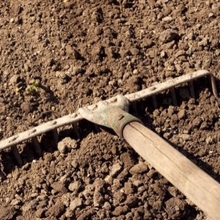I have been a veterinarian now for over 20 years and have developed a mildly decent understanding of basic cardiology. But when I learned that palms had hearts, too, I discovered my medical training did little to help me understand how the heart of a palm worked, or even what it was. So I bought some at the grocers and tried them out. This article serves as an introduction to this tasty little botanical organ.
Unlike what one might guess from the sound of it, the heart of a palm does little to promote fluid circulation throughout the body of the palm they way our hearts do. It is simply the growing center of the palm. And being the newest tissue the palm produces, it also tends to be the most tender and therefore the most edible (aside from a few species that make delicious fruits). This part of the palm is also known as palm cabbage or swamp cabbage (though it looks nothing like cabbage). Many palms have cabbage as part of their common names, denoting that, historically at least, those species were probably eaten commonly. When eaten in a salad, or as a salad, it is sometimes referred to as ‘millionaire's salad' (no idea why). This core of the palm is harvested and imported all over the world as a healthful vegetarian delicacy.
 palm heart preparation (photo Wikipedia)
palm heart preparation (photo Wikipedia)
Nutritionally palm hearts are a low calorie, non-fat, good source of fiber, calcium, vitamin C, iron, protein and a variety of other micronutrients. Almost always sold canned or bottled, there is substantial salt added in the process so commercially available heart of palm is pretty high in sodium. Fresh palm heart I am pretty sure is not a high sodium food, but is not readily available, either, unless you live in the tropics. Some sources say palm hearts have fat in them, but I have not seen that on any of the labels I looked at.


two examples of heart of palm I found at local grocers above; nutritional labels on two samples I found
Palm hearts are a pale, tubular product that is comprised of newly forming leaf tissues wrapped around each other in layers. One can carefully peel away the layers to see how the leaves are arranged. Depending upon how close to the very center of the palm, from which species it was taken from, and how it has been preserved and prepared, they can be very crunchy and fibrous (nearly inedible sometimes) to surprisingly soft and delicate (this is usually the best palm heart tissue) all with a very subtle but pleasant flavor (though the more fibrous the palm heart tissue, the more bitter it can be).


palm heart 'anatomy' showing wrapped layers of soft, edible immature leaves from deep in the center of the palm's meristem
Unfortunately to harvest the heart of palm, the palm must be cut down (this process kills the entire plant if it is not a suckering species). It takes the fastest palm, in the tropics, about 3-4 years to get large enough to be harvested, so one might guess prime palm heart can be relatively pricey food. All palms have hearts, but not all palm hearts are that good to eat (reportedly... I have little personal experience in eating palm heart other than what is available commercially). The Florida native species, Sabal palmetto, also known as the cabbage palm, was (and sometimes is) harvested for its palm heart, which is reportedly one of the tastiest. However, Sabals are solitary species and take over ten years to get to the harvesting size. And though rather large palms, a single palm does not produce sufficient heart for commercial production to be realistically possible. Most commercial heart of palm is taken from cultivated suckering species in the tropics of South America. The two primary species harvested are Euterpe oleracea (also known as the Acai Palm) and Bactris gaisepes (also known as the Peach Palm) though there are several other species sometimes used. Bactris gaisepes is normally a very spiny and noxious palm, but spineless cultivars have been developed that make it a lot easier to deal with. Both are quite fast growing species. Normally only one to two culms are taken from each palm at a time leaving the rest of the palm untouched and able to recover rapidly. This makes most commercially sold heart of palm a readily sustainable resource.


Bactris gaisepes (aka Peach palm) left; Euterpe oleracea (aka Acai Palm) right, both in cultivation in Hawaii for display only in these cases


Euterpe edulis (left) is also sometimes harvested for its heart; Sabal palmetto is as well. Both are solitary palms, therefore are killed by harvesting their heart so neither are good choices for cultivation for this product
One can find dozens of recipes on line for heart of palm, but I have only had it in salads straight from the can or jar. The following are few sites with palm heart recipes:
http://www.cooks.com/rec/search/0,1-0,palm_heart,FF.html
http://recipes.wuzzle.org/index.php/34/337
http://weirdcombinations.com/2010/04/brazilian-acai-palm-heart-pie/
http://www.grouprecipes.com/palm-hearts
http://veganjoy.blogspot.com/2009/05/palm-heart-ceviche.html
http://recipes.wikia.com/wiki/Category:Hearts_of_palm_Recipes
So this next Valentine's Day, give your special someone a healthful change of pace- perhaps some palm hearts, rather than chocolates, to show your really care about them.
Below is a nice video (in Spanish) about the collecting of palm hearts.
http://www.youtube.com/watch?v=t04EP9ywux8

















